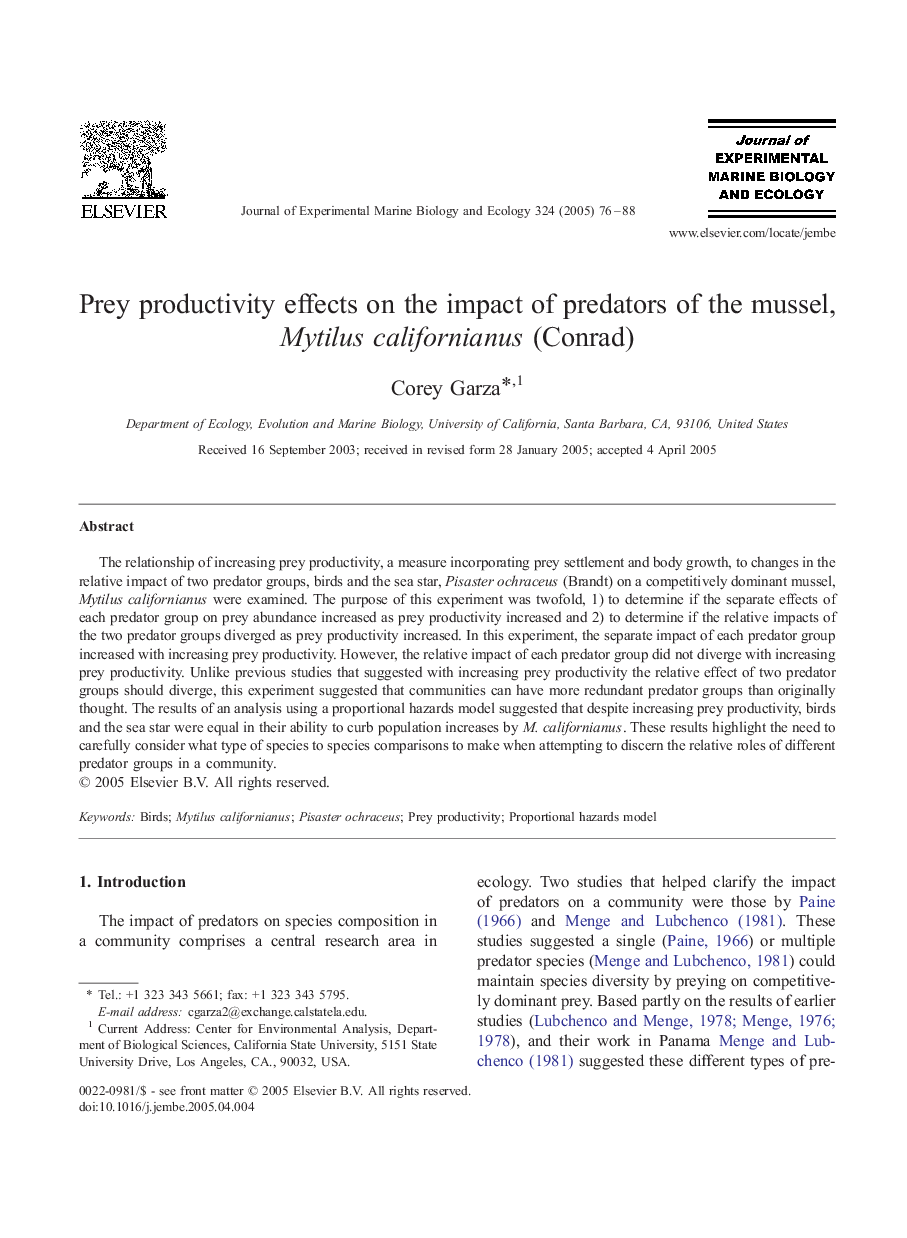| Article ID | Journal | Published Year | Pages | File Type |
|---|---|---|---|---|
| 9448745 | Journal of Experimental Marine Biology and Ecology | 2005 | 13 Pages |
Abstract
The relationship of increasing prey productivity, a measure incorporating prey settlement and body growth, to changes in the relative impact of two predator groups, birds and the sea star, Pisaster ochraceus (Brandt) on a competitively dominant mussel, Mytilus californianus were examined. The purpose of this experiment was twofold, 1) to determine if the separate effects of each predator group on prey abundance increased as prey productivity increased and 2) to determine if the relative impacts of the two predator groups diverged as prey productivity increased. In this experiment, the separate impact of each predator group increased with increasing prey productivity. However, the relative impact of each predator group did not diverge with increasing prey productivity. Unlike previous studies that suggested with increasing prey productivity the relative effect of two predator groups should diverge, this experiment suggested that communities can have more redundant predator groups than originally thought. The results of an analysis using a proportional hazards model suggested that despite increasing prey productivity, birds and the sea star were equal in their ability to curb population increases by M. californianus. These results highlight the need to carefully consider what type of species to species comparisons to make when attempting to discern the relative roles of different predator groups in a community.
Related Topics
Life Sciences
Agricultural and Biological Sciences
Aquatic Science
Authors
Corey Garza,
